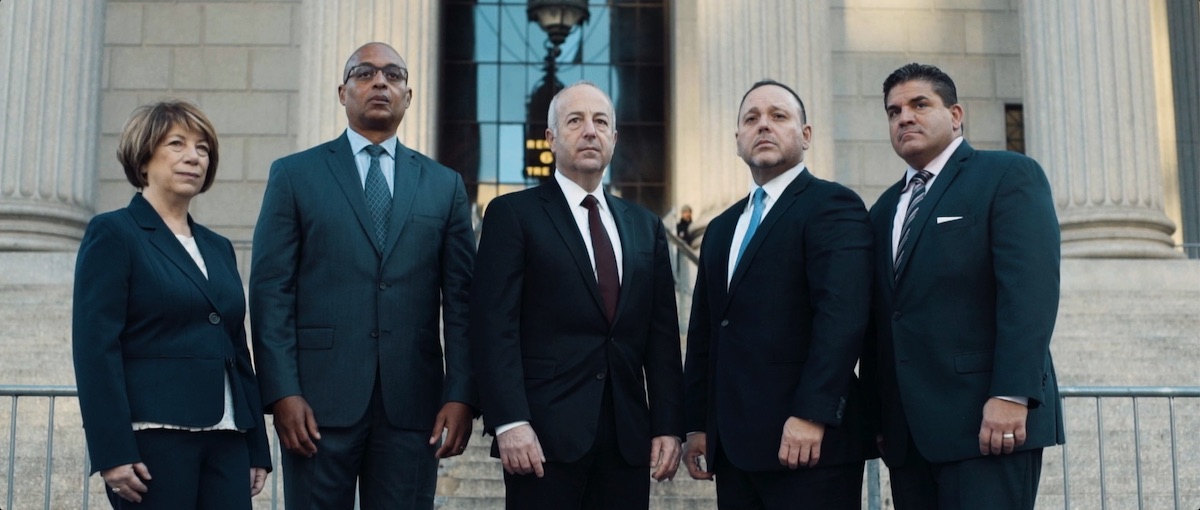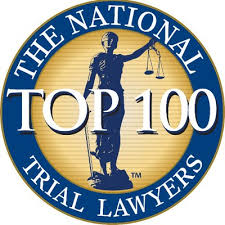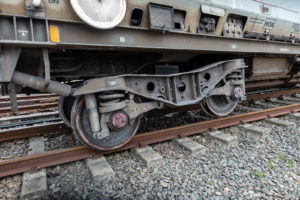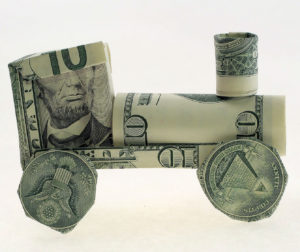East Meadow Train Accident Attorney
Most often, collisions with trains occur around railroad crossings: a rushing driver attempts to hurry across the tracks before the train arrives, only to discover that he misjudged his speed and cannot make it across in time, or fails to look up and realize that a train already occupies the space in the railroad crossing, despite a known crossing in a particular location. Derailments can also occur at railroad crossings when a collision sends the train off its rails for any reason.
Not only that, traveling on a train presents unique hazards. A slip and fall on a train, for example, could result in serious injury to a passenger.
Did you suffer an accident on a train? Have you faced a serious diagnosis as a result of a train derailment? You may deserve compensation for your injuries. Contact the East Meadow attorneys at Jacoby & Meyers, LLP today at (877) 565-2993 to learn more about your legal rights.

East Meadow Train Accidents and Their Impacts: Breaking It Down
 According to the United States Bureau of Transportation, 2019 saw around 1,800 train accidents, including derailments and collisions. These train accidents can occur in several different ways, which can impact both the liable party in the accident and the injuries you may face as a result of a train accident.
According to the United States Bureau of Transportation, 2019 saw around 1,800 train accidents, including derailments and collisions. These train accidents can occur in several different ways, which can impact both the liable party in the accident and the injuries you may face as a result of a train accident.
East Meadow Train Collisions
Direct collisions with trains do not occur as often as other types of auto accidents. When they do, however, they can cause devastating injury.
In train collisions, victims usually experience a great deal of force, which can cause injuries like:
- Traumatic brain injury. When the brain slams against the skull, it can cause traumatic brain injury in the victim. Traumatic brain injury can have physical, mental, and emotional impacts on the victim, from creating problems with both long-term and short-term memory to leaving the victim unable to manage emotions and mood. Victims of TBI may face lifelong symptoms.
- Back and neck trauma. In a train accident, the accident’s force can whip the victim around in the vehicle, leading to substantial damage to the back and neck muscles or the spinal cord itself. When a direct injury occurs to the spinal cord, it can lead to paralysis below the site of the injury. Even victims with incomplete spinal cord injury may suffer a significant loss of motor function. If the injury does not impact the spinal cord directly, it can still cause severe back and neck pain, which may linger for years after the accident.
- Amputations. The force associated with a train collision can amputate limbs directly or cause such severe crushing damage that doctors cannot repair the injured limb. Sometimes, amputees may need to have a limb removed due to lack of blood flow to the affected area, which can lead to the death of the tissue in the limb. Amputees may need to use prosthetic devices to help restore some function and make it easier for them to remain independent.
- Broken bones. Victims who walk away from a train collision with broken bones may feel lucky to have avoided more serious injury. Broken bones, however, may still cause substantial complications for the victim during the recovery process. Not only do broken bones often require surgery to set them properly, victims may need assistance with many processes, including basic self-care, and lose the ability to work during recovery. Since victims of train collisions often have multiple broken bones, they may have more substantial struggles with overall independence and capability.
- Death. The average passenger vehicle may have significantly improved safety features, but it still does not offer adequate protection against the bulk of a train. In a direct train collision, the train may continue moving until it completely crushes the vehicle or rips off the portion of the vehicle it strikes, leading to the death of the occupant.
Who bears liability for a train collision? Most often, the driver of the vehicle that strikes a train bears liability for a train collision. The driver should pay attention to signals offered at railroad crossings, including crossing lights and bars. No driver should ever attempt to “race the bar” and get across the train tracks before those bars come down once the light starts flashing.
In some cases, however, other entities may bear liability for a train collision.
For example, an attorney may consider:
- Did the lights flash properly and at the appropriate time?
- Did the bar across the railroad crossing come down as it was supposed to?
- Did any geographic features or problems cause the driver to fail to see the railroad crossing?
- Did another driver commit an error that caused the vehicle to collide with the train?
Consult an experienced train accident attorney to get a better idea of where liability may rest following a train collision.
East Meadow Train Derailments

When a train derails, it can send the train and its cargo spilling off of the tracks. Sometimes, vehicles cannot get out of the way of the derailed train. Other times, when no barrier exists, the train may dump its cargo.
Every day, hazardous materials travel across the United States on trains. While railway companies have made substantial improvements to their safety protocols over the past several years, that does not necessarily mean that they offer a perfectly safe, secure method of transportation. Sometimes, those hazardous chemicals may spill out around the area where the train derailed.
In addition to causing the same types of immediate injuries common in train collisions, train derailments can expose first responders and residents of the area to high quantities of toxic chemicals.
As a result, they may face additional injuries.
- Cancer. Many types of hazardous chemicals increase the risk of developing certain types of cancer. Residents who live near a derailed train, first responders who appear at the scene, and people who work near the scene may all face exposure to those chemicals before the spill gets cleaned up.
- Breathing difficulties. Some hazardous chemicals can burn the lungs or leave victims struggling to draw a full breath. In some cases, those symptoms may linger long after the initial accident, even causing lifelong complications for victims who suffered lung damage after inhaling hazardous chemicals.
- Chemical burns. Some caustic chemicals can cause burns when you come into contact with them. These burns may continue even after you move away from the area. In some cases, chemicals can cause burns to the eyes and lungs even after you move away from the scene of the accident.
If you faced a serious diagnosis following a train derailment in an area where you live and work, or after acting as a first responder at the scene of a train accident, you may have grounds to file a claim.
Who bears liability for train derailments? Most often, train derailments occur for one of two reasons: either because of a collision, or because of poor maintenance on the tracks.
Derailments can also, in some cases, occur due to reckless behavior on the part of the engineer: excessive speeds, for example.
- If the engineer causes the accident, liability may rest with the railroad. Most often, railroads carry extensive insurance policies designed to help offer compensation for injuries that occur in train derailments.
- If the train derails due to poor track maintenance, the entity responsible for maintaining the tracks may bear liability for the derailment. Often, railroads must maintain the tracks. In some areas, however, the tracks may belong to the city or even to a private landowner. In those cases, the entity that owns the train tracks should bear liability for an accident that occurs due to a lack of proper maintenance.
- If the train carries hazardous chemicals that cause serious illness, the railway and the manufacturer of those chemicals may bear liability for any diagnoses faced as a result of a train derailment. Both railroad companies and chemical manufacturers must work to decrease the risk of accidents associated with those chemicals.
Accidents on East Meadow Trains
Today, most people prefer planes or even buses to traveling across the United States on a train. Nevertheless, railway travel provides a less-expensive, scenic way to reach your destination. Many passengers still choose to travel via train each year. When in proper repair, trains do not necessarily pose a high risk of an accident. In some cases, however, slip and fall accidents can occur as passengers move about the train.
Victims may suffer injuries like:
- Traumatic brain injury
- Hip injuries, including broken hips
- Broken bones, especially in the hands and legs
- Amputation, if the victim slips between two train cars
- Spinal cord injuries
Train operators and companies must also exercise care to reduce the potential risk of assaults onboard, including providing adequate security to protect passengers on the train.
Who bears liability for accidents on trains? If you suffer an accident on a train due to negligence on the part of the train company, including a poorly-maintained train or a train that does not have adequate security, the railway may bear liability for your injuries. For example, if you trip and fall due to carpeting in a hallway or in a train car that has bunched up, or if you suffer an amputation due to a poor connection between cars that causes an accident, you may have grounds for a claim against the company that owns the train. On the other hand, if you suffer injuries due to a mechanical error on the train, especially a new train, the manufacturer may bear liability for your injuries.
The Compensation You Should Expect After an East Meadow Train Accident
After a train accident, you may have substantial financial concerns. Not only do you have to worry about your medical expenses, which may become incredibly substantial, especially if you suffered severe injuries, you may need to worry about your usual bills. Many traumatic injuries and long-term diagnoses can prevent you from working in your usual capacity, leading to a dip in your income when you need it most.
Fortunately, you can seek compensation through an East Meadow train accident claim that will help you manage your finances and meet many of your obligations.
Compensation for Medical Expenses

Depending on your injuries, you may have substantial medical expenses. For example, if you suffer a traumatic brain injury as a result of a train collision, you may need significant monitoring and long-term medical care to help you recover from your injuries. Talk to your attorney about how to include all of your medical expenses as part of your East Meadow train accident claim since you may have varied medical expenses based on the extent of your injuries.
Expenses related to traumatic injuries. After a train collision or an accident as a passenger on a train, you may have significant traumatic injuries. Traumatic injuries usually require emergency medical care, which starts the collection of medical bills you will ultimately face. You may need emergency transport from the scene of the accident, then go on to receive care at an emergency room or urgent care facility. Some traumatic injuries may require immediate surgical treatment. Others may require a long-term stay in the hospital to allow you to make a full recovery. Chemical burns, for example, may require a long-term stay in a special burn unit to help prevent you from experiencing further infection risk.
Traumatic injury expenses may also include:
- Long-term care, either in-home or in a special care facility
- Durable medical equipment, including crutches, braces, wheelchairs, or medical equipment like a bed for your home, which will make it easier for you to get around
- Modifications to your home to make it easier for you to remain independent despite severe injuries
- Physical, occupational, or psychological therapy related to your injuries
Expenses related to chronic illnesses and diagnoses. If you face a serious diagnosis due to chemical exposure after a train derailment, you may have unique medical expenses and needs. Many cancer patients go through surgery, chemotherapy, or radiation.
You may need durable medical equipment in your home or an in-home caregiver who will make it easier for you to manage common tasks at home despite your weakness. You may also need to manage the cost of therapy to help you recover following your injuries. Keep track of all medical expenses related to your diagnosis so that you can include them as part of your East Meadow train accident claim.
Lost Income Related to Your Injuries
Losing your income as a result of your injuries can prove catastrophic, especially since you already have substantial medical expenses to deal with. Some injuries, however, can prevent you from working during your recovery or even prevent you from returning to your previous profession. If you must miss work due to your injuries, keep track of the hours you miss and their impact on your overall income.
Talk to your attorney about how to calculate your lost income following a train accident, including income lost:
- Immediately after your accident or during treatment for a chronic condition, when you cannot work at all
- When you return to work, but can only work on a part-time basis or during limited hours
- Due to appointments for follow-ups, procedures, or therapy
You should also discuss losses like vacation time or sick time used to help continue bringing in income with your attorney. Often, you can receive compensation for some of those factors as part of your East Meadow train accident claim.
Pain and Suffering Related to Your Injuries
In addition to the physical pain and suffering associated with many common injuries and diagnoses, many train accident victims suffer substantial emotional anguish, too. You may, for example, suffer severe depression or anxiety related to your injuries. Some victims suffer social losses: they may grow isolated from friends and family members during recovery or miss out on activities they would usually engage in, for example. Victims may also miss out on special events while recovering from traumatic injuries or undergoing treatment for conditions developed as a result of toxic chemical exposure. Talk to your attorney about how to evaluate your pain and suffering, quantify it, and include it as part of your East Meadow train accident claim.
East Meadow Train Accident FAQs
![]() If you have serious questions about your specific train accident claim, contact an attorney as soon after your accident as possible. Below, find some of the answers to some frequently asked train accident questions.
If you have serious questions about your specific train accident claim, contact an attorney as soon after your accident as possible. Below, find some of the answers to some frequently asked train accident questions.
Do I really need an attorney to file an East Meadow train accident claim?
Because train accidents can involve such complexity, you should contact an experienced train accident attorney as soon after your accident as possible.
- An attorney can look for evidence. It can prove very difficult to find evidence in a train accident case. Did a speeding engineer cause a train collision? What led to a train derailment? An attorney can ensure that you have all the relevant evidence related to your train accident and can pursue compensation from the liable party as needed.
- An attorney can help evaluate your injuries and losses and provide you with a more accurate idea of the compensation you deserve. What types of injuries did you suffer in your train accident? How did they impact you long-term? Do you understand the full compensation you deserve for your injuries? An experienced train accident attorney can help give you a better idea of the compensation you really deserve, which can help you make critical decisions about your care and your finances after the accident.
- An attorney can negotiate on your behalf. Often, negotiating over an East Meadow train accident claim can add stress to a situation that already creates difficulties in your life. An attorney can take over that process for you, giving you peace of mind and the ability to focus on your physical treatment and recovery.
- An attorney represents your best interests following a train accident. Many people may get involved in the train accident investigation and claim process. The police, for example, may investigate the train accident to determine what caused it. The train company may want to know what led to a derailment and may, in fact, look into methods that can help keep the rails safer in the future. An attorney, however, has one goal: to protect and represent your interests as you seek justice and file an East Meadow train accident claim.
What should I do if I get a settlement offer from the insurance company that covers the liable party in my East Meadow train accident?
Sometimes, you’ll hear from the party that caused your train accident shortly after the accident. The liable party, or the insurance company that covers that party, may try to issue a fast settlement for your claim. Many train accident victims find that settlement over very tempting. They may, for example, want to get money in their hands fast that will make it possible for them to handle their medical bills or take care of their usual financial concerns. At the same time, however, these victims may underestimate the compensation they really deserve for their injuries.
Soon after your accident or, in the case of a train derailment, after a serious diagnosis, you may not know what your long-term medical bills will look like or how your injuries will impact every area of your life. Consult an attorney before accepting any settlement offer, especially if the insurance company attempts to pressure you into accepting a fast offer without taking time to consider it first.
How do I know whether I have grounds for a claim after an East Meadow train accident?
If you believe that you have grounds for a claim following a train accident, consult an attorney to learn more about your legal rights and what compensation you deserve.
An attorney will help you determine whether you have grounds for an East Meadow train accident claim by evaluating these common elements.
- Did another party’s negligence lead to your accident? If another party’s negligence caused your accident, you may have grounds for an East Meadow train accident claim. For example, if the railroad company failed to properly maintain the rails, leading to a serious train derailment that caused your injuries, you may have grounds for a claim against the railway company.
- Did you suffer injuries or losses as a direct result of the train accident? To file a claim, you must show that you suffered direct losses as a result of the train accident. Suppose, for example, that a train derailed in front of you. You stopped far enough back from the railroad tracks that the train did not strike you. Though it may have caused some inconvenience as it prevented you from getting to your destination until you could clear the way, you did not suffer injuries in the train derailment, and the train carried no hazardous chemicals. As a result, you have no grounds for a claim against the railroad. On the other hand, if that train crashed into your car and injured you because it failed to signal its approach with its horn, or the crossing guards failed to block the road or trapped you on the tracks, you may have a good case.
How long after an East Meadow train accident do I have to file a claim?
Following any type of train accident, from an accident on the train itself to a collision, you should file a claim before the statute of limitations runs out. If the train belongs to a government entity, or if a government entity responsible for maintaining the tracks caused a train derailment, you may need to act fast to secure the compensation you deserve. Contact an experienced train accident attorney to learn more about your right to compensation and how long you may have.
If you face a diagnosis related to a train derailment, including a cancer diagnosis sustained years after the initial derailment, the statute of limitations does not start counting down until you receive your diagnosis. An attorney may also help identify other circumstances that can help you extend the statute of limitations, giving you more time to seek the compensation you deserve.
Can I file a claim if I suffered a train collision outside an East Meadow railroad crossing?
Sometimes, pedestrians may choose to cross at a location not marked by flashing lights and appropriate crossing mechanisms. Unfortunately, this can significantly increase the risk of suffering serious injuries in a collision with a train, since pedestrians may have less warning time to get out of the way of a train.
As a pedestrian, you should not walk or play on train tracks. However, in some cases, you may still have grounds for an East Meadow train accident claim related to injuries sustained on the train tracks even if you did not suffer your injuries at a railroad crossing. For example, if the railroad company knew that people frequently crossed at a certain location, or if a property owner failed to properly maintain the area around train tracks, you may have grounds for a claim against those parties.
Consult an East Meadow train accident attorney to learn more about whether you have grounds for a claim.
What steps do I, as a driver or pedestrian, have to take to protect myself at an East Meadow railroad crossing? Can I file a claim against the railroad even if I do not take all those steps?
As a driver or pedestrian, you should always exercise care around railroad tracks. Look for the train before crossing: check for flashing lights or a lowering protective barrier that will prevent you from crossing the tracks. Always cross at crossings when possible, rather than crossing the railroad tracks at another location. Do not attempt to race the barrier or go around it once it lowers. If you fail to follow those rules, you may bear liability for any accident that occurs on the train tracks.
On the other hand, sometimes, you may still prove that the railroad bears liability for your accident. For example, if the railroad failed to properly maintain the crossing, or if the railroad did not properly install a crossing at a location frequently used by either pedestrians or motor vehicles, you may have grounds to file a claim following a collision in those areas.
Will I have to go to court to settle an East Meadow train accident claim?
Most of the time, train accident claims, like other types of claims, settle out of court. Not only does going to court increase the legal expenses faced by both parties, it can bring bad publicity down on the railroad. Most of the time, the railroad’s insurance company and lawyers will recommend agreeing out of court to minimize both expense and publicity.
Sometimes, however, you may need to go to court to settle your claim. If you have to go to court, it helps immensely to have an experienced attorney on your side who already understands your case and will help fight for you.

East Meadow train injury lawyer, Andrew Finkelstein
Do You Need an East Meadow Train Accident Lawyer? Contact Jacoby & Meyers, LLP Now
If you suffered injuries in a train accident, whether you faced serious injuries from a train collision or suffered a devastating diagnosis following a train derailment involving a train carrying hazardous cargo, you may deserve compensation for your injuries.Contact Jacoby & Meyers, LLP today at (877) 565-2993 or open a confidential webchat to learn more about your legal right to compensation following any type of train accident.
East Meadow Office
90 Merrick Avenue, Suite 601
East Meadow, NY 11554
(877) 565-2993
Client Testimonial
Review: 5/5
★ ★ ★ ★ ★
“The team and Jocoby & Meyers are excellent. They make sure the client is well taken care of. They are great with communication and they take their time to make sure the client is satisfied. Will definitely recommend.”
Review by: Danielle H.
Check out some of our other reviews.
